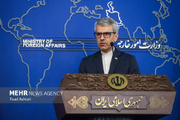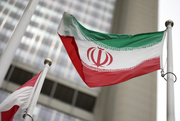The projected need of $ 26.2 bn in 2020 is down from a previous estimate of $ 30 bn. New findings suggest that the world can reach ambitious Fast-Track targets for preventing new HIV infections, AIDS-related deaths and discrimination with fewer resources.
“Under the Fast-Track approach the world is driving down costs quickly to close the gap between people who have services and people being left behind,” said Michel Sidibé, Executive Director of UNAIDS in Geneva on Friday. “Urgently and fully funding and front-loading investments will save lives and lead us to ending the AIDS epidemic by 2030.”
The new UNAIDS reference document entitled Fast-Track—update on investments needed in the AIDS response explains improvements to the investment model with critical new inputs from the revised 2015 World Health Organization guidelines on HIV treatment. The guidelines recommend HIV treatment for all people living with HIV to reduce illness and deaths, which will increase the total cost of treatment. The guidelines also recommend streamlining care and support services that will contribute to lower costs per patient per year compared to earlier guidelines while retaining quality standards.
Other inputs include new evidence that projects lower costs for HIV medicines and supplies particularly in high-burden countries that will further offset the increased investment associated with expanded treatment coverage.
Failure to Fast-Track would translate into an additional 17.6 million HIV infections worldwide and an additional 10.8 million AIDS-related deaths globally between 2016 and 2030.
“The cost of inaction is too high. We have a real opportunity to end the AIDS epidemic by 2030,” said Mr. Sidibé. “If we do not quicken the pace of action, millions of people will die needlessly. Failure to Fast-Track risks prolonging the epidemic indefinitely.”
Global solidarity and shared responsibility
The report shows that countries from all economic levels will be required to invest more. Resources available for the AIDS response in low- and middle-income countries were $ 19.2 bn in 2014. The new projections in the report show that combined domestic and international investment in HIV will need to increase by about one third, to $ 26.2 bn in 2020. After this peak, projected investments steadily decrease to $ 22.3 bn in 2030. The Global Fund to Fight AIDS, Tuberculosis and Malaria has announced that it requires $ 13 bn from 2017 to 2019 to close the investment gap for the three diseases.
To reach the Fast-Track targets, total annual international assistance for HIV must increase by $ 2.8 bn compared with 2014 levels. This includes an additional $ 1.8 bn for low-income countries and an additional $ 1.9 bn for lower-middle-income countries, while upper-middle-income countries' international assistance declines. The remaining annual international investment in upper-middle-income countries of $ 0.5 bn in 2020 is required for countries with a particularly high burden of HIV, and challenges are expected regarding the transition to self-reliance and the provision of services to key populations.
Building on the principles of global solidarity and shared responsibility, the report includes the results of an analysis of the fiscal space of Fast-Track countries. This analysis indicates that the largest potential increase in future financing for the AIDS response could be achieved by increasing domestic health budgets, with the allocation for HIV services proportional to national disease burden. This would enable the majority of countries to finance the Fast-Track approach. However, countries with the lowest income and highest burden of HIV will continue to require international support.
Investing in communities
Greater investment in civil society and community-based service delivery is critical to the Fast-Track approach. Outreach to key populations in low- and middle-income countries should grow to 7.2% of total investments by 2020, and the estimated resource needs for community-based delivery of antiretroviral therapy should grow to 3.8% of total investment. Social enablers—including advocacy, political mobilization, law and policy reform, human rights, and stigma reduction—should reach 8% of total expenditure by 2020.
Investment needs for HIV prevention – including condom promotion, prevention of mother-to-child transmission, pre-exposure prophylaxis, voluntary medical male circumcision and a proportion of outreach to key populations—increase from $ 4.5 bn in 2016 to $ 7.3 bn in 2020.
Data shows early indications that country adoption of the Fast-Track approach is working. Since 2012, levels of HIV service coverage have increased and over the same time period there has been a decline in new HIV infections and AIDS-related deaths. Between the end of 2012 and the end of 2014, HIV treatment coverage increased by 3.6 million (37%) and the annual coverage of services to prevent mother-to-child transmission of HIV increased by 140,000 (16%) in low- and middle-income countries. During the same time period, annual coverage of voluntary medical male circumcision increased by 1.4 million (82%) in 14 priority countries.
Ending AIDS as a public health threat by 2030
The new projections bring the world closer to the Sustainable Development Goal target of ending AIDS as a public health threat by 2030. The annual global number of new HIV infections will fall by nearly 90% compared to 2010, and AIDS-related deaths will fall by 79% compared to those in 2010. Scientific advances are expected to further push progress to a targeted 90% reduction in AIDS-related deaths.
The UNAIDS 2016–2021 Fast-Track Strategy has established a set of three people-centered goals and 10 measurable targets that must be met by 2020 to end the AIDS epidemic by 2030. This includes achieving the 90–90–90 treatment target for 2020 whereby 90% of people living with HIV know their HIV status, 90% of people who know their HIV-positive status are accessing antiretroviral treatment and 90% of people on treatment to have suppressed viral loads. Other targets include zero infections among children and that 90% of women and men, especially young people and people living in high-prevalence settings, have access to HIV combination prevention and sexual and reproductive health services. The targets are firmly based on an approach that leaves no one behind and that is grounded in human rights. If achieved, global health outcomes will be significantly improved.
SH/PR

























Your Comment